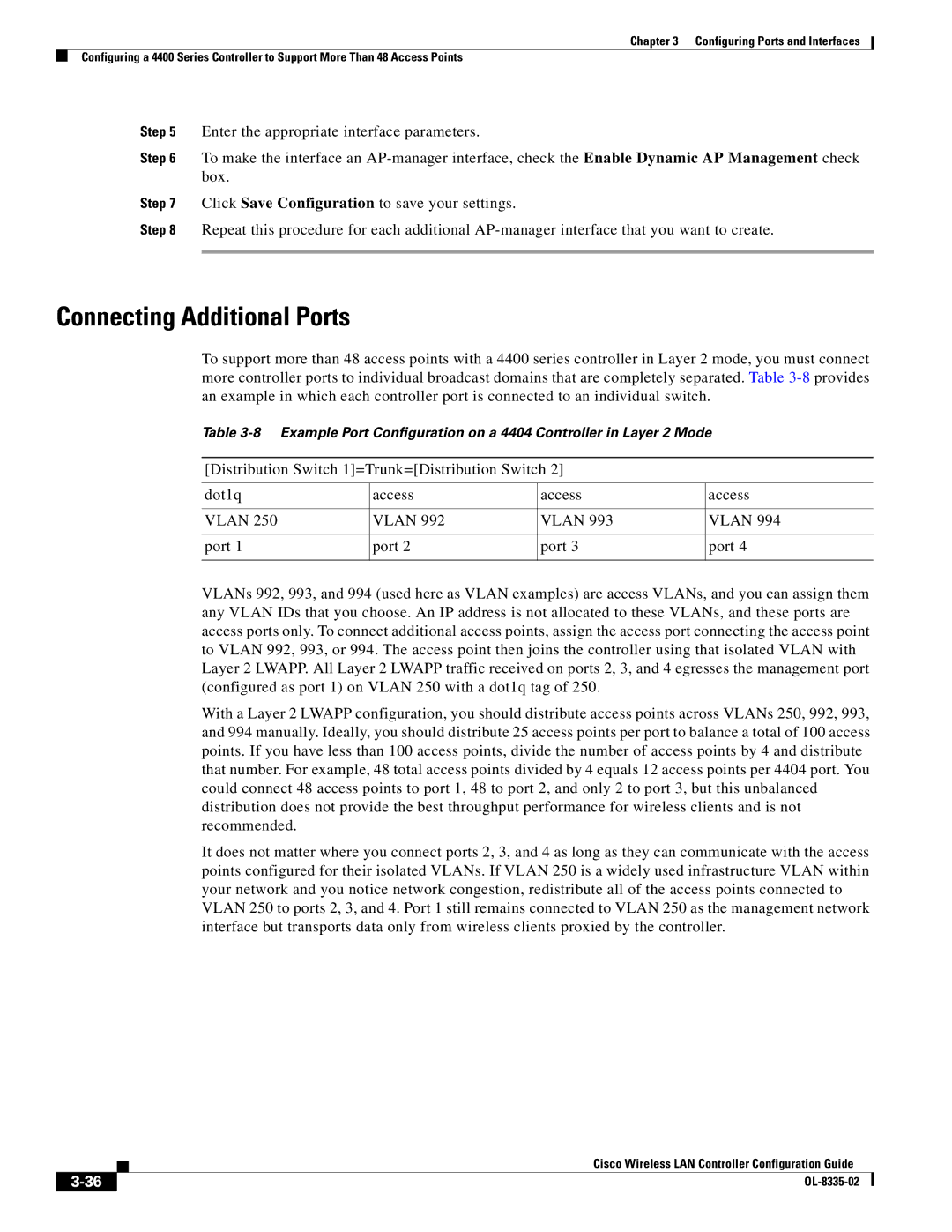
Chapter 3 Configuring Ports and Interfaces
Configuring a 4400 Series Controller to Support More Than 48 Access Points
Step 5 Enter the appropriate interface parameters.
Step 6 To make the interface an
Step 7 Click Save Configuration to save your settings.
Step 8 Repeat this procedure for each additional
Connecting Additional Ports
To support more than 48 access points with a 4400 series controller in Layer 2 mode, you must connect more controller ports to individual broadcast domains that are completely separated. Table
Table
[Distribution Switch 1]=Trunk=[Distribution Switch 2]
dot1q | access | access | access |
|
|
|
|
VLAN 250 | VLAN 992 | VLAN 993 | VLAN 994 |
|
|
|
|
port 1 | port 2 | port 3 | port 4 |
|
|
|
|
VLANs 992, 993, and 994 (used here as VLAN examples) are access VLANs, and you can assign them any VLAN IDs that you choose. An IP address is not allocated to these VLANs, and these ports are access ports only. To connect additional access points, assign the access port connecting the access point to VLAN 992, 993, or 994. The access point then joins the controller using that isolated VLAN with Layer 2 LWAPP. All Layer 2 LWAPP traffic received on ports 2, 3, and 4 egresses the management port (configured as port 1) on VLAN 250 with a dot1q tag of 250.
With a Layer 2 LWAPP configuration, you should distribute access points across VLANs 250, 992, 993, and 994 manually. Ideally, you should distribute 25 access points per port to balance a total of 100 access points. If you have less than 100 access points, divide the number of access points by 4 and distribute that number. For example, 48 total access points divided by 4 equals 12 access points per 4404 port. You could connect 48 access points to port 1, 48 to port 2, and only 2 to port 3, but this unbalanced distribution does not provide the best throughput performance for wireless clients and is not recommended.
It does not matter where you connect ports 2, 3, and 4 as long as they can communicate with the access points configured for their isolated VLANs. If VLAN 250 is a widely used infrastructure VLAN within your network and you notice network congestion, redistribute all of the access points connected to VLAN 250 to ports 2, 3, and 4. Port 1 still remains connected to VLAN 250 as the management network interface but transports data only from wireless clients proxied by the controller.
Cisco Wireless LAN Controller Configuration Guide
| ||
|
